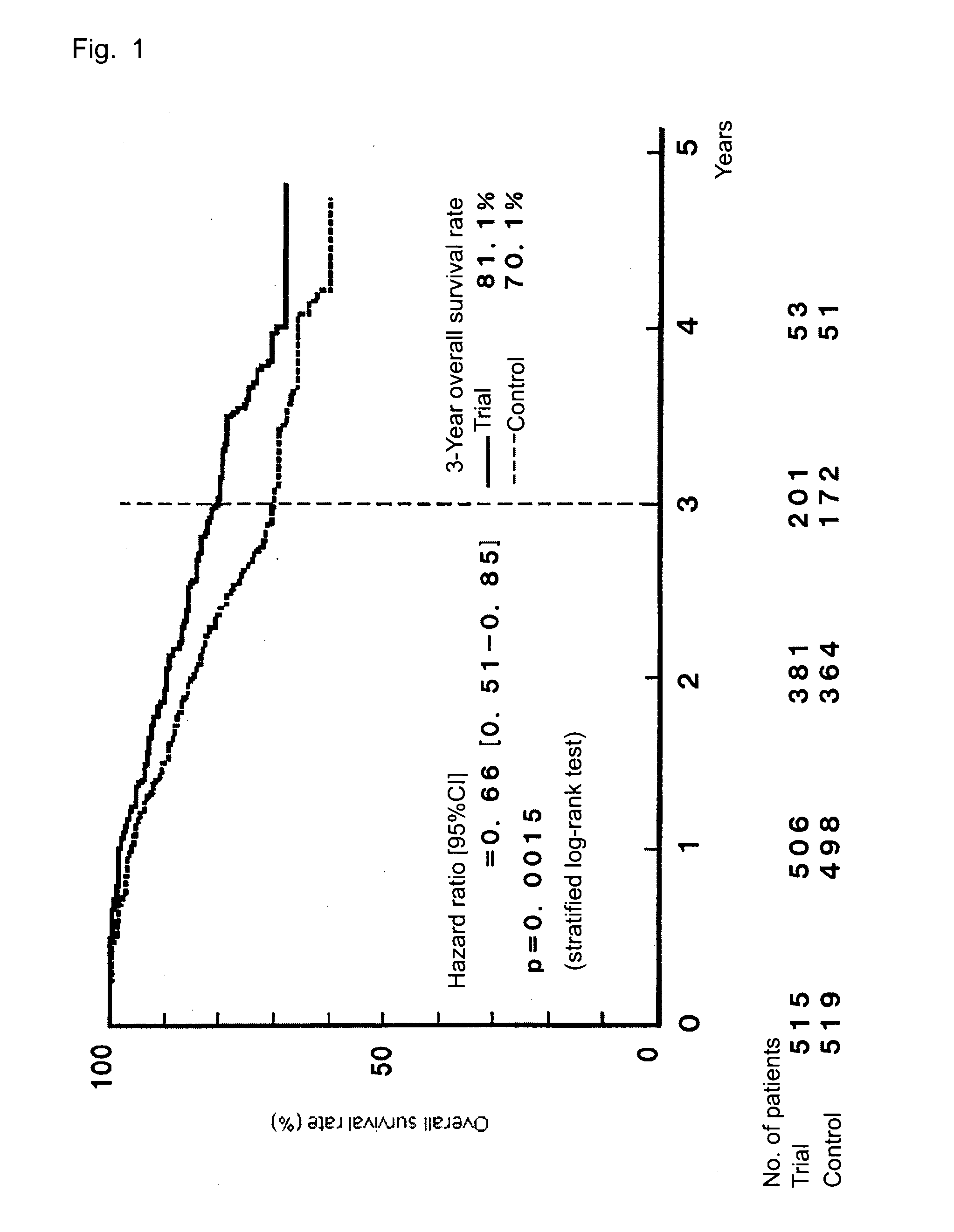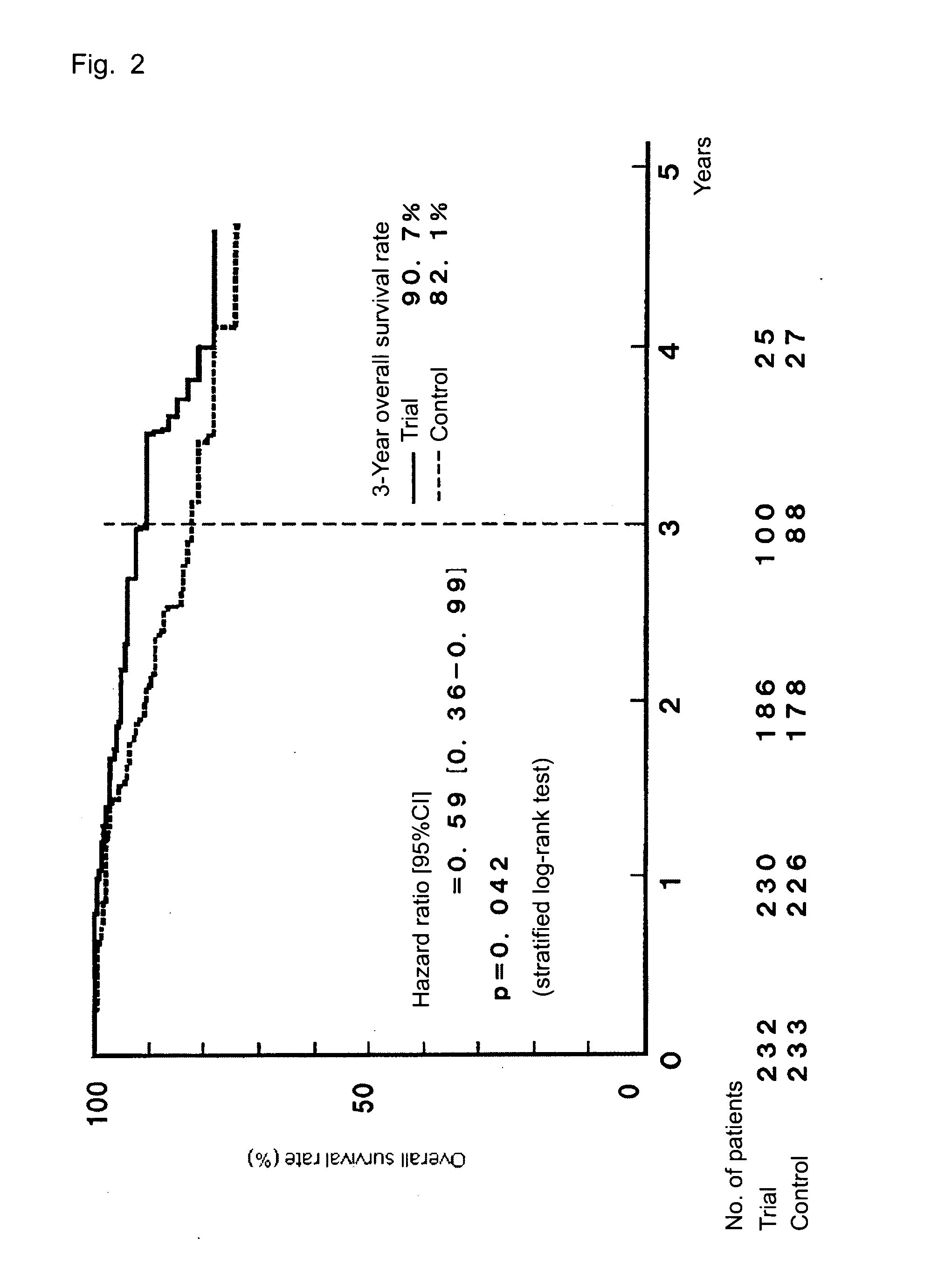Postoperative adjuvant chemotherapy for gastric cancer
a gastric cancer and chemotherapy technology, applied in the field of postoperative adjuvant chemotherapy for gastric cancer, can solve the problems of unadjustable recurrence, impotent postoperative adjuvant chemotherapy, and unadjustable recurrence, so as to improve the survival rate of gastric cancer patients after surgery, and reduce the incidence of adverse effects
- Summary
- Abstract
- Description
- Claims
- Application Information
AI Technical Summary
Benefits of technology
Problems solved by technology
Method used
Image
Examples
example 1
(1) Purposes of the Trial
[0049]TS-1 (capsule form) is administered to gastric cancer patients in stage II (excluding T1 cases), IIIA, or IIIB who received curative resection, and the survival benefit of the drug is assessed and compared with that of a surgery-only group serving as a control group, whereby the efficacy of the postoperative adjuvant chemotherapy is assessed. The evaluation is performed on the basis of overall survival as a primary end point and relapse-free survival and safety of TS-1 administration as secondary end points.
(2) Target Cases
(i) Eligibility Criteria
[0050]1) A case in which gastric cancer was histologically proven.
2) A case which received ≧D2 lymph node dissection (dissection of the first and second lymph nodes) and surgery of curability A or B (as defined in the Japanese Classification of Gastric Carcinoma, 13th edition).
3) A case finally classified as stage II (excluding T1 cases), IIIA, or IIIB (as defined in the Japanese Classification of Gastric Carc...
PUM
| Property | Measurement | Unit |
|---|---|---|
| Time | aaaaa | aaaaa |
| Time | aaaaa | aaaaa |
| Mass flow rate | aaaaa | aaaaa |
Abstract
Description
Claims
Application Information
 Login to View More
Login to View More - R&D
- Intellectual Property
- Life Sciences
- Materials
- Tech Scout
- Unparalleled Data Quality
- Higher Quality Content
- 60% Fewer Hallucinations
Browse by: Latest US Patents, China's latest patents, Technical Efficacy Thesaurus, Application Domain, Technology Topic, Popular Technical Reports.
© 2025 PatSnap. All rights reserved.Legal|Privacy policy|Modern Slavery Act Transparency Statement|Sitemap|About US| Contact US: help@patsnap.com



